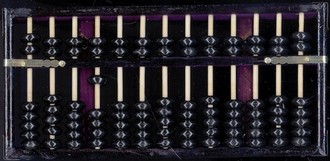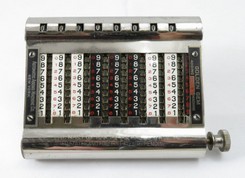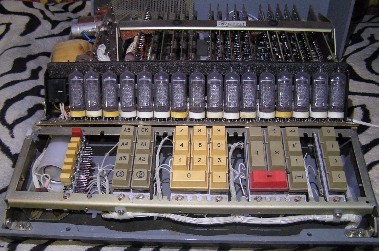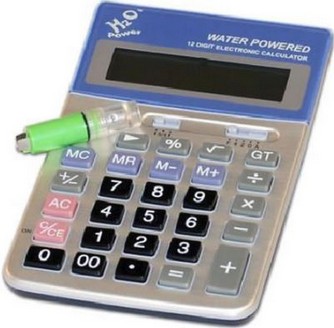Virtual Museum
After looking at many calculators, with very different technologies, I wanted to summarize the various type of power used in them. They follow the period in time when the calculators were introduced, but some of them took different options, and we will try to see why.
Mechanical calculators:
Well, these are the easiest one to describe. First, the power was solely provided by the user himself. It could be by moving stones (Abacus), turning wheels (Adders), or moving a chain or a slider with a stylus.
 Abacus
Abacus Chain adder (here a Gem Adder is shown)
Chain adder (here a Gem Adder is shown)Then, the mechanical Calculators got more complicated, and the addition of an electric motor facilitated the work of the users. I classified these machines under the term : Electro-
 Here is a very colorful example with a SEARS 636A
Here is a very colorful example with a SEARS 636ALater on, we got the electronic revolution. The first machines were running with NIXIE displays (not to mention the CRT tubes). Of course, these displays required a lot of power and most of these machines were powered only from the AC (either 110V or 220V).

Example above is an ISKRA 122 (russian calcualtor) with NIXIE display.
With the invention of the LED displays, we finally were able to get the calculator smaller and powered from a regular battery: either 9V or several 1.5V type AA:


Interesting thing to notice: the manufacturers tried to minimize the space taken by the batteries, by moving them in different places in the calculator. In the case of HP-35, the 2 AA batteries were at an angle, giving the calculator a slanted aspect:
In the case of the Summit calculators, the inventor tried to minimize the front face and put the batteries (AA size) on the bottom, making the calculator very thick:
Almost at the same time, we have the Plasma or gas discharge displays. These were mostly for Desktop models, powered by AC, but a few models were using these big C-
All this craziness came to a halt when the LCD displays were invented. Finally we could power a calculator from a simple button size battery, and it will last almost forever.
At almost the same time, solar cells appeared and were implemented in a few models. These solar cells were huge at the beginning, but got smalle over time, with the progress of the technology:
Look at the size of the cells on the TEAL PHOTON below:
I almost forgot, did I mention the calculators powered by water??? Well, they exist, and one of the brands is correctly named H2O

I hope you enjoyed this brief review of power in the calculators. Maybe over time I will review and enhance. Feedback is always welcome
I hope you enjoyed this brief review of power in the calculators. Maybe over time I will review and enhance. Feedback is always welcome
